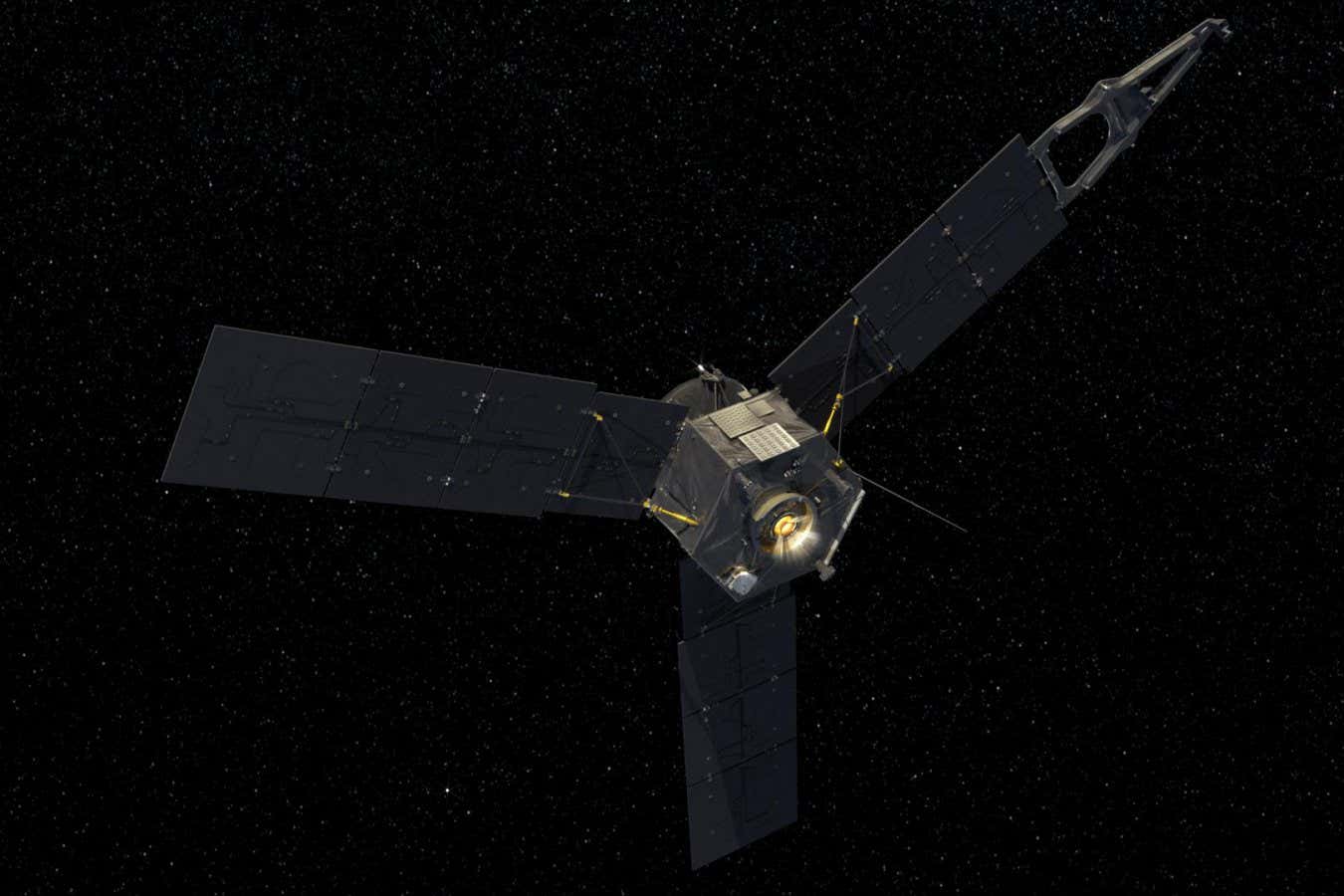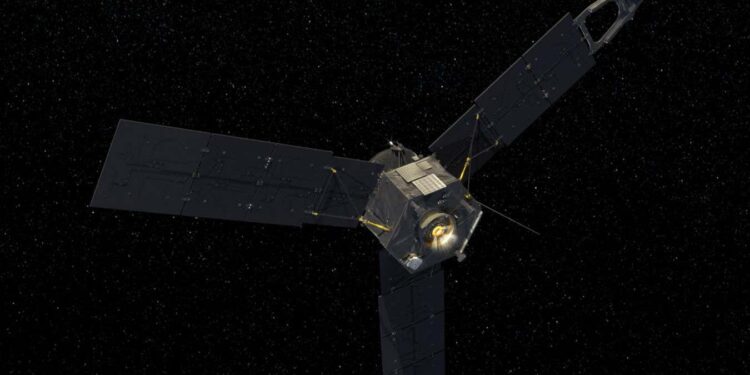
NASA’s Juno spacecraft could be sent to intercept the interstellar object
NASA/JPL-Caltech
An interstellar object currently hurtling through our solar system will loop around the sun and disappear back into the remote depths of the cosmos within months. Astronomers will be able to capture images as comet 3I/ATLAS traverses our region of space, but do we have any chance of intercepting this object – only the third of its kind ever spotted – to learn more about it?
Scientists around the world are exploring various options to do just that, including proposals to reroute NASA and European Space Agency (ESA) missions already in space and repurpose shelved spacecraft projects for a hurried launch. But with the comet moving at 60 kilometres per second and so little time to prepare, it won’t be easy.
One of the proposed plans is from Avi Loeb at Harvard University, who controversially suggested that the interstellar object ‘Oumuamua could be an alien spacecraft and has made similar claims about 3I/ATLAS. Loeb and his colleagues have released a paper, which has not been peer-reviewed, proposing that NASA’s Juno spacecraft could be boosted out of its current orbit around Jupiter to meet 3I/ATLAS on 14 March next year.
The idea isn’t without its problems. Mark Burchell at the University of Kent, UK, points out that Juno is old – and showing its age. The craft launched in 2011 and was initially intended to end its mission by crashing into Jupiter’s surface in 2021, although that was later postponed to September this year. It has already encountered two technical glitches this year, both of which were rectified by engineers.
“Its current orbit allows it to view Jupiter up close, and its visits to Io [a moon of Jupiter] in 2023 [and] 2024 exposed it to a lot of radiation. So it is no surprise it is now showing anomalies in performance that need rebooting,” says Burchell. “Could it be re-tasked? In theory, if it can be done, and the instruments work, then there is novel data there.”
In a post on X, Jason Wright at Pennsylvania State University also expressed scepticism about the idea, pointing out that the craft is low on fuel and has issues with its engine.
Another probe already in space that could get a closer look at 3I/ATLAS is the ESA’s Jupiter Icy Moons Explorer (JUICE), which is currently on its way towards the planet to study three of its moons. Luca Conversi at the ESA says the agency is looking into this possibility. “We are aware of this precious opportunity and are currently exploring the technical feasibility. I cannot add too much at the moment, unfortunately,” says Conversi.
But while JUICE would have a closer view than Earth, it won’t be able to change course towards 3I/ATLAS. “I’m not sure it is feasible to send it to the comet: unfortunately astro-dynamics is more complicated than what we see in sci-fi movies, and it is not easy to change the course of spacecraft,” says Conversi.
There are several spacecraft currently in orbit around Mars that are approaching the end of their lifespans, such as the Mars Reconnaissance Orbiter and Mars Odyssey, which might have a chance of a flyby past 3I/ATLAS, according to work done by Atsuhiro Yaginuma at Michigan State University and his colleagues. The advantage of this approach is that the comet will pass much closer to Mars than Earth, but it isn’t yet clear if any of these craft have enough fuel for the journey.
The ESA is working on another mission that should give us a better chance of getting close to an interstellar object in the future. The Comet Interceptor spacecraft, due to launch in 2029, will loiter at a stable point between Earth and the sun, waiting for the discovery of a comet or interstellar object that it can race to meet and survey. The mission is highly unusual because at the time of launch, scientists will still have no idea what its intended target is, or when that target will appear.
Colin Snodgrass at the University of Edinburgh, UK, the deputy lead for Comet Interceptor, says even this mission would “need a bit more oomph” to catch an object moving as fast as 3I/ATLAS. For these speedy visitors, the most realistic approach is to have a large mission with a lot more fuel and fewer sensors. “If you really just want to have something that goes fast and just gets a look, then you strip it right down to the minimum useful payload and put all the mass into fuel – and then you’d have a shot,” he says.
Another idea that could be useful in the future involves putting a small satellite into a large orbit once a month. “You’d end up with these things spaced all around Earth orbit,” says Snodgrass. “And so in any given month, one of them will be coming back towards Earth and then could use gravity assist to go off somewhere interesting.”
Astronomy projects like the Legacy Survey of Space and Time will soon give us a better understanding of the number of these objects that enter our solar system, as well as earlier warnings of their arrival. “It would definitely make a difference when it’s going this fast. Even if you had a year [of] warning instead of a few months’ warning before perihelion, that would make a big difference,” says Snodgrass.
Topics:
Source link : https://www.newscientist.com/article/2490618-can-we-send-a-spacecraft-to-intercept-interstellar-object-3i-atlas/?utm_campaign=RSS%7CNSNS&utm_source=NSNS&utm_medium=RSS&utm_content=home
Author :
Publish date : 2025-08-04 18:00:00
Copyright for syndicated content belongs to the linked Source.













